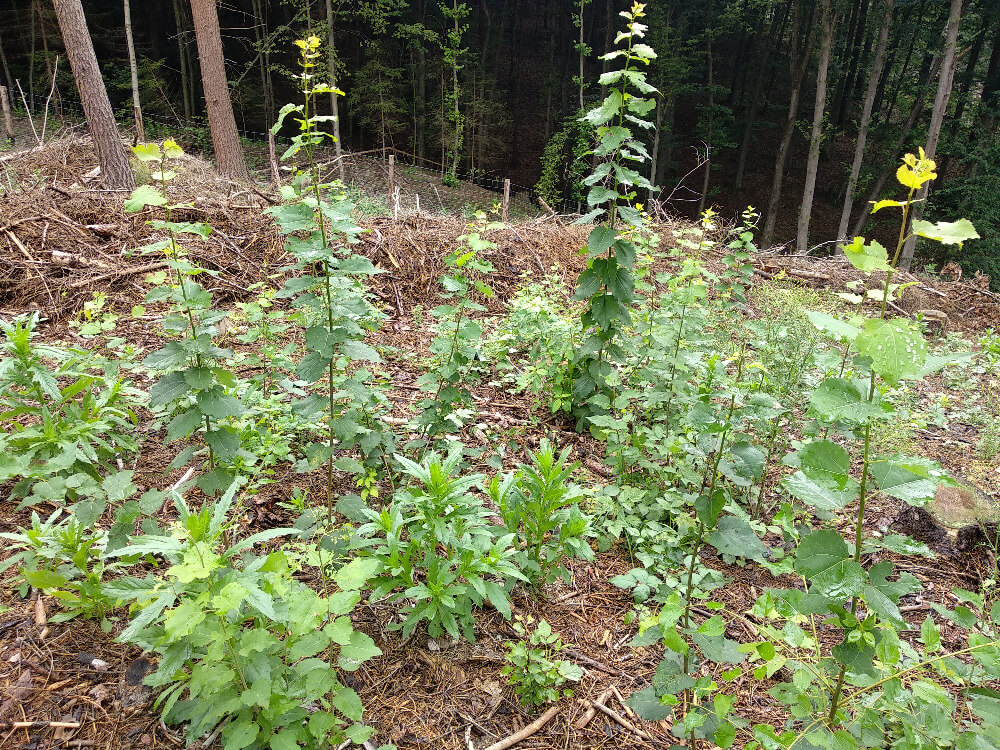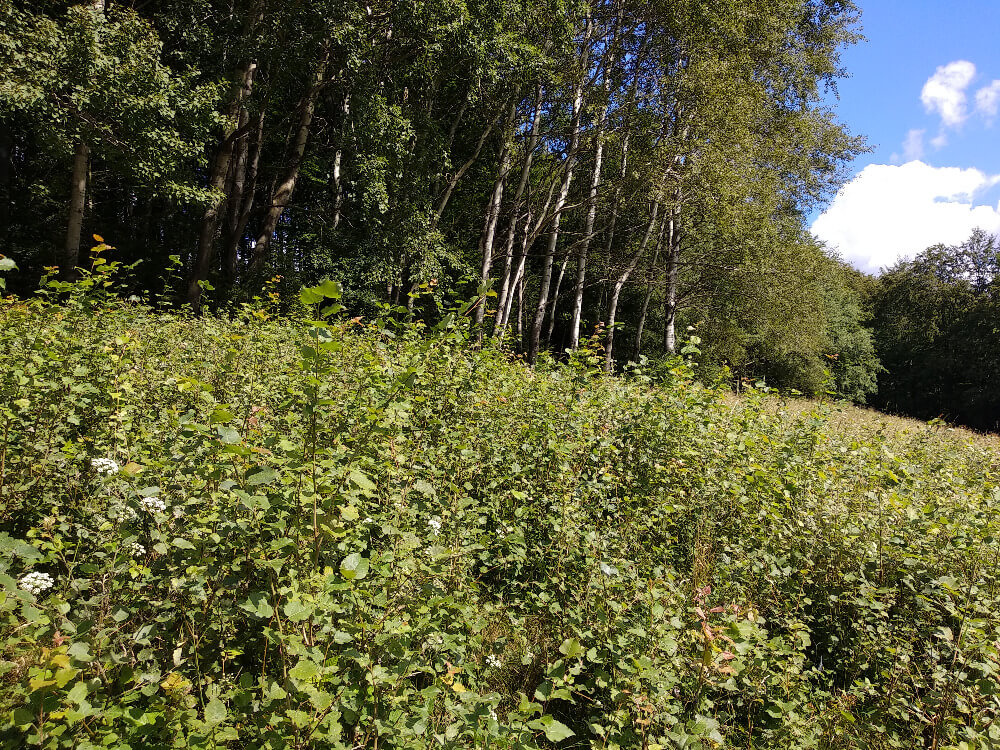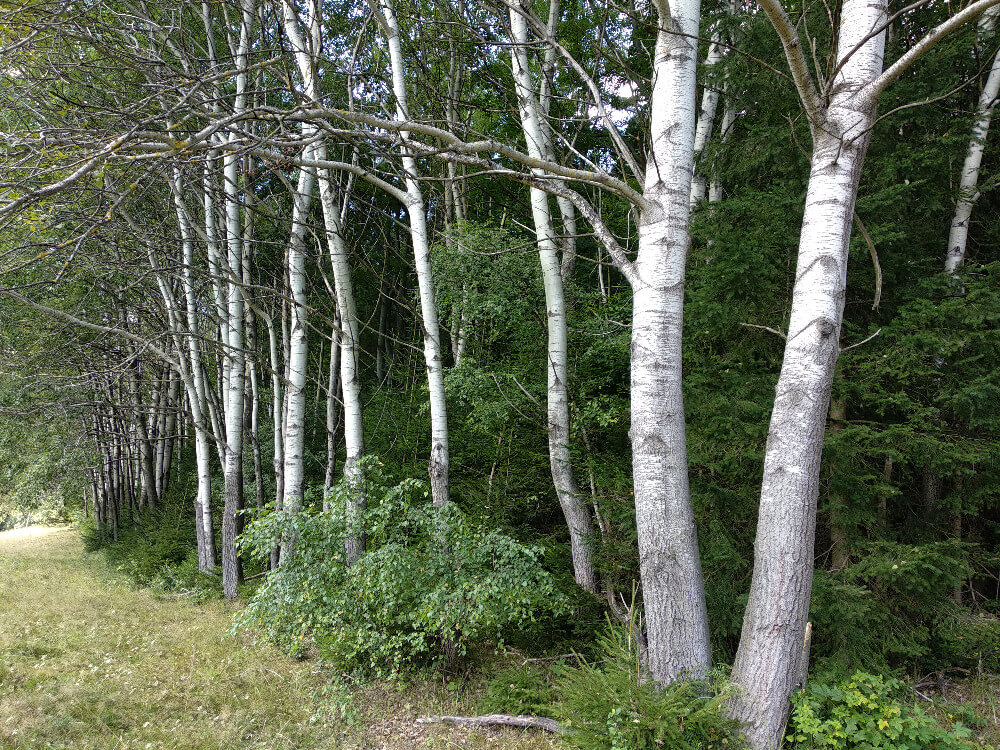An international team of forestry scientists, led by experts from the FFWT MENDELU, have conducted a study focusing on the common (Eurasian) aspen (Populus tremula), a tree species once abundant in Central European forests but now overlooked. In regions of the Northern Hemisphere where aspen stands occur, including the North American quaking aspen (Populus tremuloides), they significantly contribute to increasing biological diversity. Scientists believe that aspen could play a similarly important role in domestic forests. For this purpose, they conducted analysis of more than four million forest stands across the Czech Republic. The analysis confirmed that aspen is a promising species for Czech forestry both in terms of supporting biodiversity and in enabling forests to adapt to climate change, where it can serve as a preparatory tree species.
In the past, the aspen was much more widespread. However, this changed due to the commercial orientation of forest management, which favoured uniform stands in terms of species and structure. To better understand the historical context of aspen occurrence and its spatial and site requirements, scientists analysed more than four million forest stands and groups of stands throughout the Czech Republic. They utilized existing data on the size of forest estates, types of planning, and the categorization of forests with assigned management intensity: “The survey revealed that the occurrence of aspen is statistically significantly associated with the size of the forest estate and the forest category, i.e. the type and intensity of management. In terms of site requirements, which we refer to as the ‘realized niche,’ encompassing both a production and ecological optimum, we also assessed the ecological characteristics of the site based on forest typology, which is one of the significant results of the study,” explained its lead author Antonín Kusbach.
The experts based their analysis not only on historical field measurements, i.e. data from forest management plans, but also utilized modern remote sensing methods and sophisticated analytical techniques.



Aspen systems are capable of rapid regeneration and colonization of new sites, indicating their resilience to disturbances such as fire, disease, insect infestation, or gale-force winds, which experts predict in climate change scenarios: “It is sometimes said that, in North America, you can walk from coast to coast and never leave the shade of aspen. Maybe that’s not entirely true, but it speaks for the flexibility and adaptability of this tree species. It shows the great potential of aspen,” said Paul C. Rogers, co-author of the study from the Western Aspen Alliance, Ecology Centre, and Department of Environment and Society at Utah State University, speaking of the future of aspen in Europe.
The idea of a promising future for aspen in Europe is also supported by on-site inspection: “Our field observations indicate that aspen has naturally found its way into Central European forests after the extensive decline of Norway spruce due to bark beetle outbreaks. I think this is also because forestry practice has changed its view on the role of pioneer species, primarily aspen and birch, compared to years ago when they were rigorously eliminated from stands. Thanks to its very good regenerative abilities, aspen thrives in stands and can become one of the pioneer species in multi-phase natural forest regeneration,” Kusbach summarized the topic.
The study results were published in the scientific journal PLOS ONE.
Contact for further information: Ing. Antonín Kusbach, Ph.D., Department of Forest Botany, Dendrology, and Geobiocoenology, +420 545 134 557, antonin.kusbach@mendelu.cz
More news
-
Mendel University in Brno is the main coordinator of an international project focused on the protection and conservation of narrow-leaved ash (Fraxinus angustifolia), a key tree species in the floodplain forests of Central and Southern Europe.…29. 12. 2025
-
MENDELU coordinates activities for biodiversity conservation and sustainable…
The Faculty of AgriSciences and the Faculty of Forestry and Wood Technology at MENDELU are coordinating an international project in the Amazon that contributes to biodiversity conservation, sustainable management, and improving quality of life.…16. 12. 2025 -
CZELO celebrates 20 years of supporting Czech science and education in Europe
For two decades, the Czech Liaison Office for Education and Research in Brussels (CZELO) has been supporting Czech institutions, researchers, and students in engaging with European programmes in education, science, and innovation. At the…9. 10. 2025 -
Scientific expedition in Mongolia: new butterfly discoveries and warning signs…
Experts from Mendel University, in collaboration with colleagues from other scientific institutions, conducted biodiversity mapping during a three-week summer stay in Mongolia, focusing on the southwestern part of the country, the Gobi Altai region…28. 8. 2025 -
Coffee cultivation has a poor future due to climate change, agroforestry system…
Globally, coffee provides a livelihood for 125 million people. But forecasting models show that its cultivation has a poor future due to climate change. Sites suitable for growing Coffea arabica are predicted to decline dramatically. In that case,…4. 8. 2025 -
A new publication on biodiversity of the floodplain landscape in the…
Ecological Changes and Biodiversity of the Floodplain Landscape in the Morava–Dyje Confluence Area is the title of a book that will be published in the second half of 2025. It is the result of the work of a broad spectrum of experts specializing in…28. 7. 2025 -
EuAsiaN-ROOT Project Unveils Collaborative Research on Tree-Root-Mycorrhizal…
The Horizon Europe project, Eurasian Network for Collaborative Research on Tree-Root-Mycorrhizal-Pathogen Interactions in Forest Soils (EuAsiaN-ROOT), coordinated by the Faculty of Forestry and Wood Technology, aims to provide a deeper…24. 6. 2025 -
Five Female Wolves Fitted with GPS Collars in the Beskydy and Javorníky…
Researchers from the Faculty of Forestry and Wood Technology at Mendel University in Brno have successfully captured and fitted GPS telemetry collars on five female wolves in the Beskydy and Javorníky Mountains over the past two years. These…28. 5. 2025 -
FFWT launches unique data collection on forest ecosystem functioning in MENDELU…
The Department of Forest Ecology at the Faculty of Forestry and Wood Technology of Mendel University in Brno (FFWT MENDELU), in cooperation with the Masaryk Forest Training Enterprise at Křtiny (ŠLP Křtiny), has launched monitoring of selected…23. 5. 2025 -
Professor Vladimír Tesař on the 30th anniversary of Pro Silva Bohemica: focus…
The Faculty of Forestry and Wood Technology and other stakeholders commemorated the thirtieth anniversary of Pro Silva Bohemica, an association of foresters dedicated to promoting close-to-nature forest management. Professor Emeritus Vladimír Tesař…9. 5. 2025